“I garden with two main motivations: to encourage wildlife and to grow edibles.”
You will all hate me for this, but this appeared on my screen and my heart plummeted. Do I really need to explain?
Well, I suppose the first thing is that I hate horrible language and here you have one of the worst examples. What on earth does anyone mean by ‘encouraging wildlife’? My picture of ‘encouraging’ is playing aeroplanes with food to persuade a toddler to eat a spoonful. Or yelling for a football team? So how on earth do you ‘encourage wildlife?’
Sort of – “come on, little slug, you know you can reach that lettuce if you really try”? Or “Yes, Bambi, you’ll get over that fence: just one more leap!”

How do you encourage this fine fellow?
‘Wildlife’ is of course an odd term in itself, encompassing rats and locusts as well as cuddly things.
Badgers are usually seen as cuddly, hedgehogs as sweet. There is much dispute in the UK about how many hedgehogs are eaten by badgers – the latter being a protected species:
“The habitats that badgers and hedgehogs inhabit in the UK overlap greatly. They also share very similar diets and foraging grounds, with both species maximising their consumption of prey items like earthworms. Badgers are also what are called ‘intraguild predators’, meaning that they not only compete for a lot of the same prey as hedgehogs, but can also hunt hedgehogs themselves when other food is scarce.
Although species such as foxes and domesticated pets are known to attempt to eat hedgehogs, badgers are the main predator of hedgehogs in Great Britain. This is because they are the only species believed to be able to manoeuvre and prise open hedgehogs when they roll into a defence curl.”
Clever! (But – I thought that we need those earthworms??)
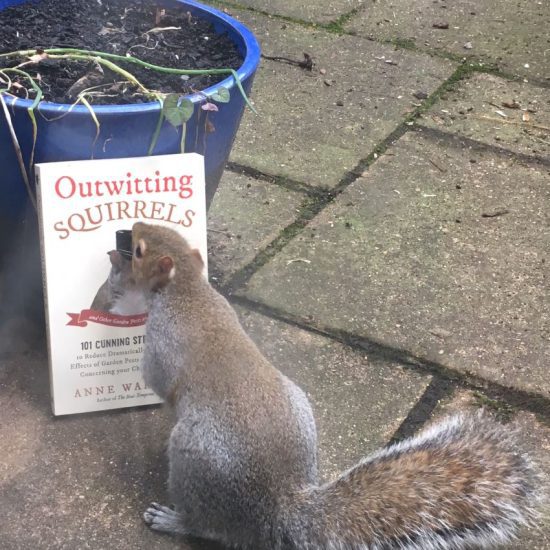
They can read too…
It’s also disputed just how much damage grey squirrels do to our bird population
and whether it may even be a good thing. Though I wonder how happy birds feel when their babies vanish and “the survival rate of those remaining often goes up, as they have less competition for food in the nest.” If this is good for birds, maybe our ‘encouragement’ should involve going round robbing birds’ nests?
Let’s face it – cuddly wildlife needs to eat something and it’s going to be some other kind of wildlife.
Hm, Charles points out that there is vegetarian wildlife. And maybe people who garden for wildlife don’t much like the insects or plants which wildlife consume. I’ve often wondered if carrots mind being yanked up and eaten, but that belongs in the ‘growing edibles’ framework.
And grey squirrels definitely kill trees. So do rabbits. I can vouch for that myself.
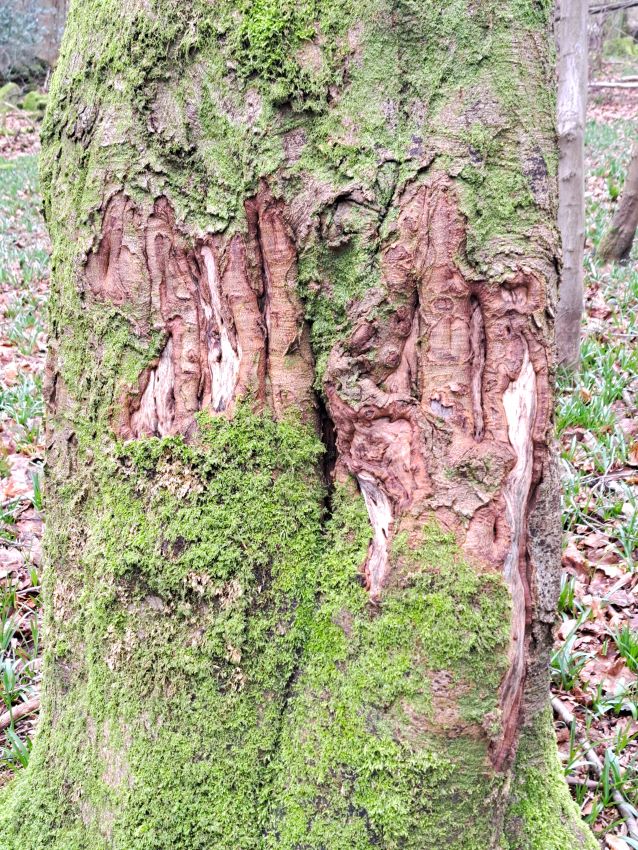
And some trees do survive the attack.
Mice and voles are quite cuddly looking –
but some people remove leaves from their borders in case they provide shelter for this sort of wildlife. And sometimes voles eat slugs. (But we like slugs now?)
So if wildlife consumes and damages wildlife, by its very nature and inevitably, which special wildlife do we garden for?? I love and feed birds, especially the beautiful long tailed tit, which even squirrel lovers think may get scoffed by squirrels.
You may, if you are terribly anti humans, think deer are helpful and worth encouragement, since accidents with them possibly kill twenty people a year in Britain. Wild boar may be helping those figures. How to ‘encourage’ them? Take your fences down? Dunno – they seem to wander into people’s gardens without any encouragement.
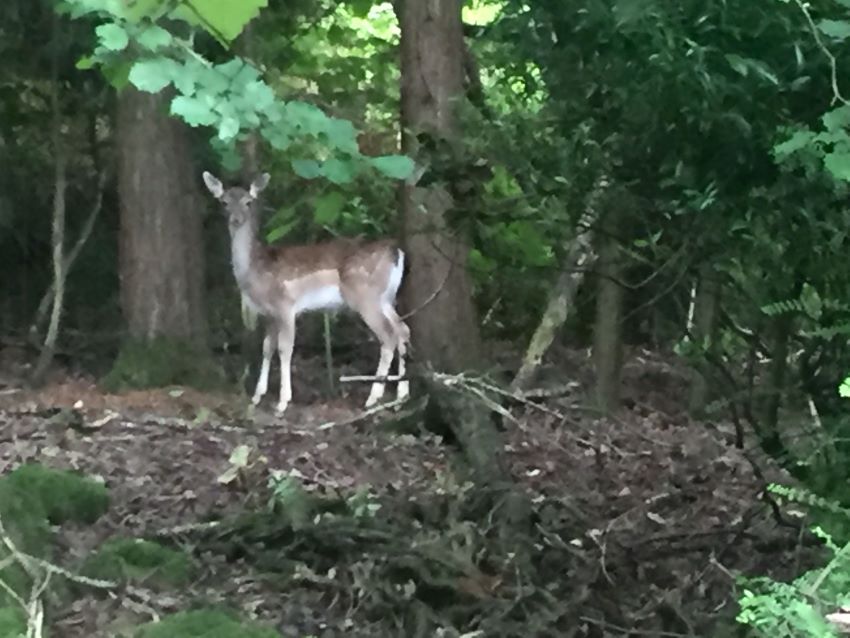
Here’s our dear deer….
Well, we love bees don’t we? They are pollinators and we know that some people garden totally for their benefit. Though we do know that honey bees in the UK can have a detrimental effect on wild pollinator species, including bumblebees. And some of those are parasitic in ways you may not want to know about, on other bees. Which ones should you encourage??
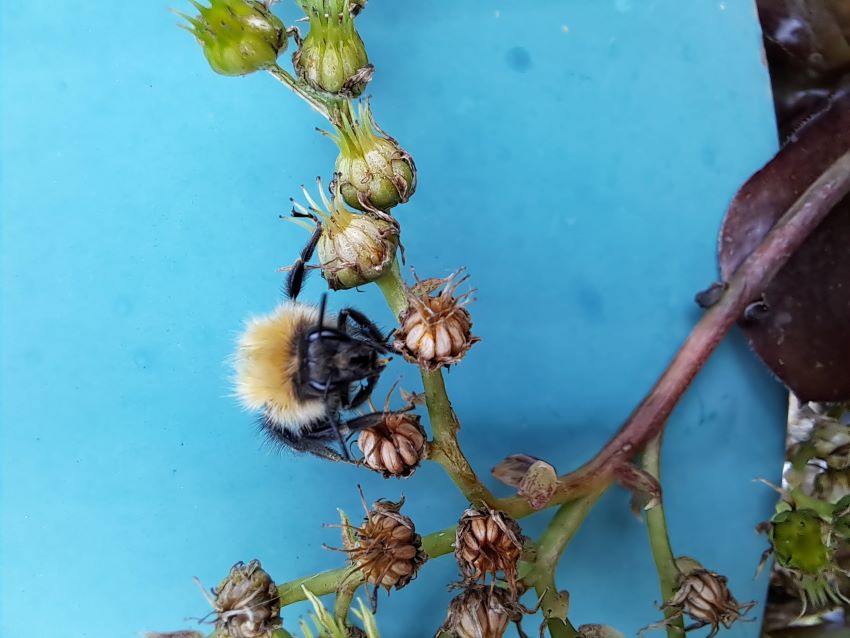
This is a nice bee. Possibly.
If you are so minded you can read all about the most horrible parasites here, and decide if you’d like to encourage them. There are wasps with the same kind of horrid habit too. I read this recently: “We introduce the good predators, such as microscopic wasps, 2mm across, which kill the aphids by injecting their babies into the back end of an aphid for them to burst out, like the film Alien.” Tough on the aphids, which are a bit wild too. But we do know how to encourage wasps – have a picnic.
We used to have a lot of frogs but then not so much.
And one day Charles watched a newt eating frogspawn and it all made sense. He tried to save the frogspawn by building a kind of cage in the pool but it just made a good place to see the newts having supper.
Don’t get me wrong – I’m happy to share my garden with most of this stuff. All these creatures think it’s their home and I think it’s mine, so sometimes we fight a bit. But we all rub along apart from those fenced out. It’s just life.
As for the food growing – well, it doesn’t interest me but I understand how worthy it is and how important to a great many gardeners. I do think that it makes the rubbing along with wildlife a bit harder, though, as it provides feasts for wildlife as well as humans.
I suppose it would be hard to explain to someone who only gardens for veggies and wildlife that my principal motivation for making a garden is to create and enjoy beauty and excitement. (Though not so much the excitement of newt feasts)
You in love with wildlife gardening??
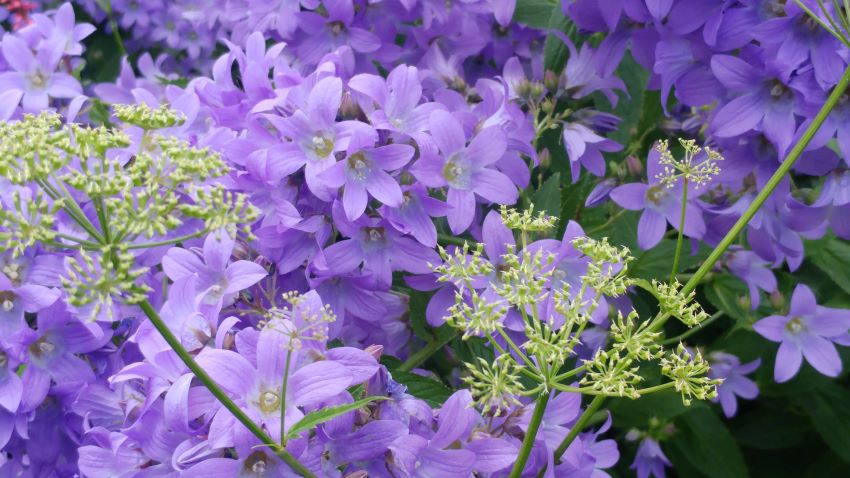
It’s not wild and you shouldn’t eat it…
PS – news from UK:
“Squirrels are causing chaos at a London housing estate by using scaffolding to climb into people’s homes and steal their food.
Residents at Sumner Buildings in Southwark, central London, said the brazen rodents have the run of the estate since building work was carried out.”

